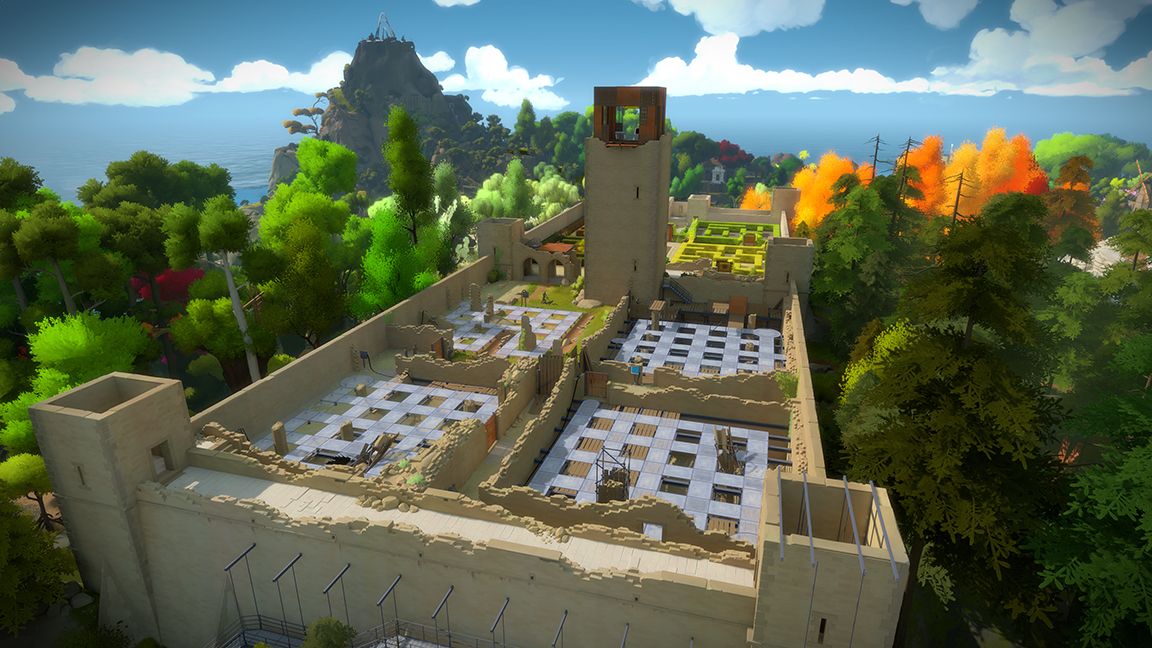
Sometimes the puzzles jump off the panel, and incorporate the environment around them to be solved correctly. Occasionally, the panel itself may be altered, such as having parts obscured by shadows, or a shattered panel screen that makes it difficult to correctly see the maze image. Doesn’t sound difficult at first, but considering that the path you trace can’t cross or double back on itself, including at corners, the challenge becomes more pronounced. Most puzzles must be solved in a limited space, often no larger than a five-by-five or six-by-six panel. The challenges have a lot of variety, and often incorporate more than one unique ruleset into a given puzzle. Tetris blocks must be outlined in their exact shape and orientation as the board dictates, which is much harder to do in practice and still make it to the exit than it sounds. For example, pips of different colors must be divided into separate sections on the way to the exit. However, the puzzles continuously evolve over the course of the game, adding new symbols onto the puzzle boards that incorporate new challenges into the mix. The objective is always the same: draw a path through the maze, from start to finish. The puzzles, as difficult as they become, all trace their roots back to those early tutorial tasks. I couldn’t help but be strongly reminded of TV’s Lost, with that same sense of “I could find anything here, at any time”. A cozy bench erected on a scenic overlook, an abandoned lounge chair left on a sandy beach, an artist’s table and several completed sketches tucked away in a peaceful copse of cherry blossoms – these discoveries, while not in any way vital to the gameplay, carry with it a fascinating sense of wonder and tranquility, and yet are disturbing in their isolation. Buildings, statues, and structures you encounter as you journey back and forth point to a large number of individuals at one point inhabiting this land. There is no explanation of who created the island and the structures upon it, though clearly someone called this place home. When music does appear, it is from natural sources, like a record player that must be utilized as part of a puzzle. This is true even where audio is concerned, as there is no traditional musical score, just the sounds of nature and the player existing within it. The game removes all artificial barriers to bring players as close to the island experience as possible.

There isn’t even a cursor on screen, save for the puzzle-solving sections. The short tutorial area you’ll find yourself in at the start reveals all there is to know about The Witness’s gameplay: to reach the next of many panels, you freely roam the 3D island in first-person perspective, completely unburdened by any interface or inventory, as no puzzles ever require anything more than your wits.

Unlocking this second door opens the path outside, and from here on out the game abandons linear paths in favor of an open island world to explore you can go anywhere at any time, though each area’s puzzles often have to be activated one after another. Doing so causes the door to open, revealing a dark area with another door – and another puzzle – within it. This puzzle, like all others to follow, must be completed by drawing a line through a maze, from a pre-set starting point to its exit. This panel can be activated by entering puzzle mode, which freezes the camera and causes a reticule to appear on-screen. The game opens without fanfare, skipping any sort of menu screen, dropping you right into a long, darkened tunnel, at the end of which awaits an orange panel set into a solid metal door. The Witness’s premise can easily be summarized in a few bare-bones sentences. While it sounds mundane on paper, like nothing more than a barrage of maze puzzles coming one immediately after another, the true serene beauty of the game doesn’t present itself until having spent some time in its colorful, thought-provoking world.

Forget everything you know about Blow’s previous game, Braid, pitch any preconceptions about traditional adventure games right out the window, and get ready for an enthralling, sometimes grueling, and always satisfying marathon of puzzle-solving and exploration.

Perhaps the single most important thing one needs to know before embarking on The Witness, the latest game by Jonathan Blow, is to go into it with a wholly clean slate.


 0 kommentar(er)
0 kommentar(er)
